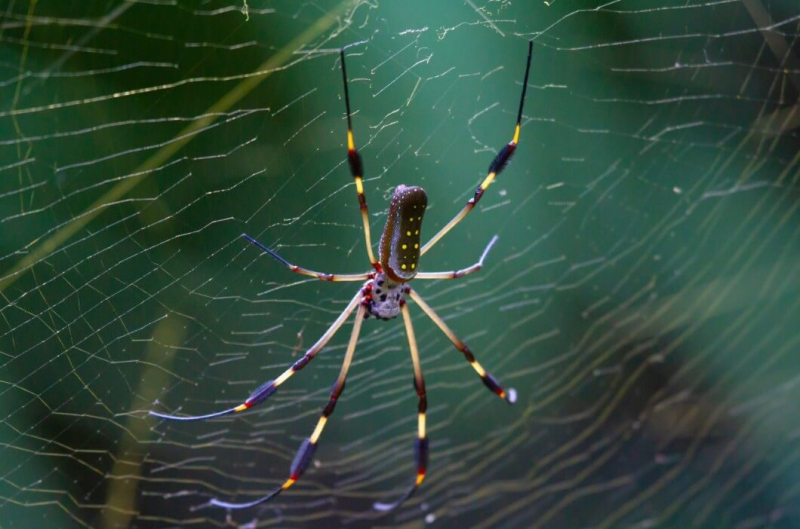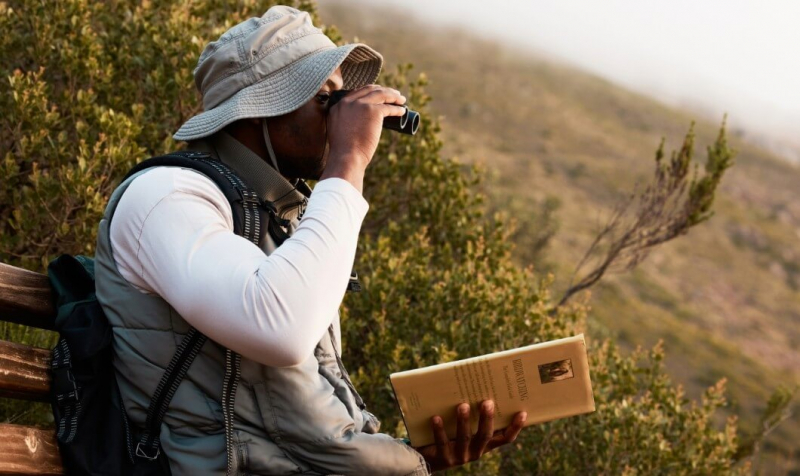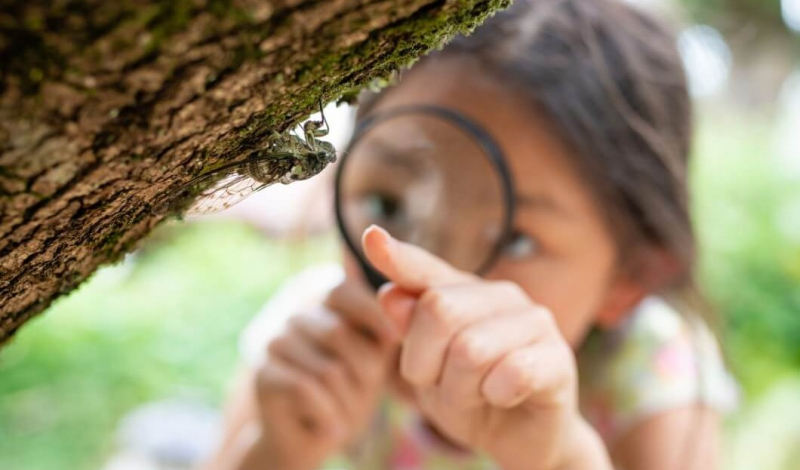In the soft light of a savannah morning or the quiet darkness of a rainforest at night, the typical safari has long focused on the loud roar of lions and the trumpeting of elephants—the famous Big Five that many hope to see and experience. However, in 2025, there’s a growing trend in the background: the micro-safaris.
This personal journey replaces large jeeps with small headlamps and careful steps, inviting travelers to really look at the “little five”—ants that seem as important as a lion’s roar, shrews that are hard to find like leopards, and beetles with armor like rhinos.
Instead of the excitement of taking photos, micro-safaris offer the beauty of carefully watching, revealing the hidden connections of biodiversity that support entire ecosystems. With ecotourism worldwide growing to $295.83 billion this year and expected to triple by 2032, this trend isn’t just a small change—it’s a thoughtful shift toward sustainable wonder, where the smallest creatures take center stage.
Growing from a need for deeper experiences rather than just quick thrills, micro-safaris fit with the “slow safari” idea that’s becoming popular in East Africa and elsewhere, which emphasizes spending several days in one place to reduce carbon footprints and strengthen connections with nature and local communities. As too many tourists put pressure on popular wildlife areas, these smaller adventures offer less crowded paths and amazing discoveries. “It’s about finding the magic in the very small,” says a Patagonia guide in a recent article, where Darwin’s frogs—tiny creatures that protect their eggs in their vocal sacs—are even more interesting than jaguars. Let’s follow this path of tiny giants, from European insect cities to Amazonian nights and African ant-lions.
Europe’s Insect Odyssey in Saint-Léons
The ideas behind micro-safaris go back to the 19th century, thanks to French entomologist Jean-Henri Fabre, who turned his Aveyron gardens into secret stages for beetles and bees. Today, his work is still alive in Saint-Léons at Micropolis, the City of Insects—a large tribute that’s celebrating its 25th anniversary in 2025 with new exhibits about leafcutter ants’ underground worlds and stick insects’ amazing camouflage. Open all year, this family-friendly place attracts 100,000 visitors each year, mixing interactive labs with butterfly gardens where colorful wings flutter like living jewels.
The old static displays are gone; in 2025, there are new augmented-reality games to find nocturnal moths and guided “Fabre walks” through wildflower fields, echoing the entomologist’s careful observations. “Insects aren’t just in the background—they build the foundation of life,” says site director Marie Duval, as visitors wear headlamps to follow the Morse-code dances of fireflies. For travelers in Europe, Micropolis shows that micro-safaris don’t need to cross continents; a day here brings back a sense of childlike wonder, proving that the infinite small can thrive even in mild climates.
Costa Rica’s Nocturnal Symphony
Go to Costa Rica, a leader in ecotourism with 5% of the world’s biodiversity, and the micro-safari really comes alive at night. The Osa Peninsula—a green area that makes up 7% of the country’s land but half its species—becomes a glowing ballet as red-eyed tree frogs make croaking sounds and thorny devil stick insects unfold like alien plants. Here, in the warm embrace of Corcovado National Park, night hikes with naturalist guides reveal rare creatures every 10 days, from brightly colored poison dart frogs to velvet-covered moths that look like they’re made of midnight silk.

Outfitters like Luna Lodge and Lapa Rios Lodge offer custom 2025 plans: full-day packages that combine oxcart rides with evening spotlight tours, where guests kayak across oxbow lagoons to see the glowing eyes of caimans and the dew-covered webs of orb-weaver spiders. “The Osa isn’t just a list of things to see—it’s a classroom,” says guide Carlos Mena, whose 20 years of experience have led to sightings of endemic glass frogs, which are almost see-through.
Amazonia’s Living Inventory
Click here to preview your posts with PRO themes ››
Peru’s Tambopata National Reserve, a vibrant stretch bordered by the Madre de Dios River, unfolds a surprising micro-safari tapestry. Think over 1,200 butterfly species and more than 100 types of amphibians. Canoe trips on Lake Sandoval in the daytime? Expect electric displays from Ranitomeya poison frogs. As twilight arrives, trails buzz with sapphire flashes of morpho butterflies and leaf-mimicking katydids, masters of vanishing acts.
Rainforest Expeditions’ Tambopata Research Center is a hub for immersive experiences come 2025. Four-day visits mix ethno-botanical walks where you might glimpse raiding columns of army ants, with stops at macaw clay licks for memorable avian cameos. Quechua Expeditions adds a layer of culture, blending indigenous tales into the search for Hercules beetles, their horns as impressive as any elephant tusk. One lodge naturalist notes that “Every excursion inventories the infinite,” while guests document discoveries under the starlit canopy. Latin America’s eco-boom – anticipating 2025’s trends with community-based adventures – means these tours are not only highlighting the small but also helping conservation efforts so that the Amazon’s micro-miracles can endure.

Africa: The Little Five in the Shadow of Giants
Even in Africa’s safari heartlands, the focus is shifting. Guides in Kruger National Park, South Africa – a biodiversity hotspot where safari tourism could hit $5.1 billion by 2030 – are now offering “Little Five” quests, a welcome alternative to the usual Big Five obsession. This quintet, an idea coined in the ’90s to offer a new perspective, mirrors the majesty of its larger counterparts: the lion ant (a fierce defender of its colony), the elephant shrew (sniffer with a long nose), the leopard tortoise (an armored wanderer), the rhinoceros beetle (the horned giant of the leaf litter), and the buffalo weaver (a superb nest-builder).
Little 5 Safaris in Limpopo will be leading the way in 2025, with dawn patrols and bush walks. Here, trackers will help you decipher dung beetle trails or spot the subtle snares of antlion pits. Zambia’s Luangwa Valley and Kenya’s Laikipia are also extending the invite, combining Little Five hunts with explorations of medicinal plants and birdsong symphonies. As a Namibian outfitter put it, “In the big cat’s shadow, the mantis prays – and honestly, that’s the real thrill.” This embodies the rise of slower safaris, with multi-night stays in places like Queen Elizabeth or Bwindi that offer more than just sightings. Think lion prides at play, or Batwa elders sharing insect folklore.

Slowing Down for Sustainability
A micro-safari, at its heart, is the very definition of slow safari: less reliance on jeeps, more gentle exploration; less about conquering, more about connecting. Expect multisensory journeys in 2025 – tasting the tang of termites or inhaling the scent of acacia trees – while emissions are cut by focusing on local experiences. Experiential tourism is booming, and Forbes is watching bespoke trails in Colombia’s butterfly havens and Puerto Rico’s frog choirs. The benefits are wide-ranging: stronger eco-awareness combats the loss of biodiversity, and revenue boosts reserves, like Tambopata, with small-scale operations funding anti-poaching efforts.
But there are also challenges. Overenthusiastic photographers could risk disturbing the delicate balance. Tour operators are trying to counter this with visitor caps and education, to ensure this trend whispers rather than roars.
As 2025 approaches and the safari industry anticipates a global revenue of $36.64 billion, the micro-revolution offers a timeless truth: wonder has nothing to do with size. From Fabre’s gardens to Osa’s gloaming, these tiny tales remind us that the greatest narratives unfold at eye level – or even below. Are you ready to crouch down and take a look? The small world awaits, patient as a praying mantis… and these tours, with visitor caps, hope to ensure serenity, dovetailing noctourism’s projected 2025 surge (according to BBC forecasts) and turning darkness into a canvas showing biodiversity and, indeed, skin revealing beating hearts.


